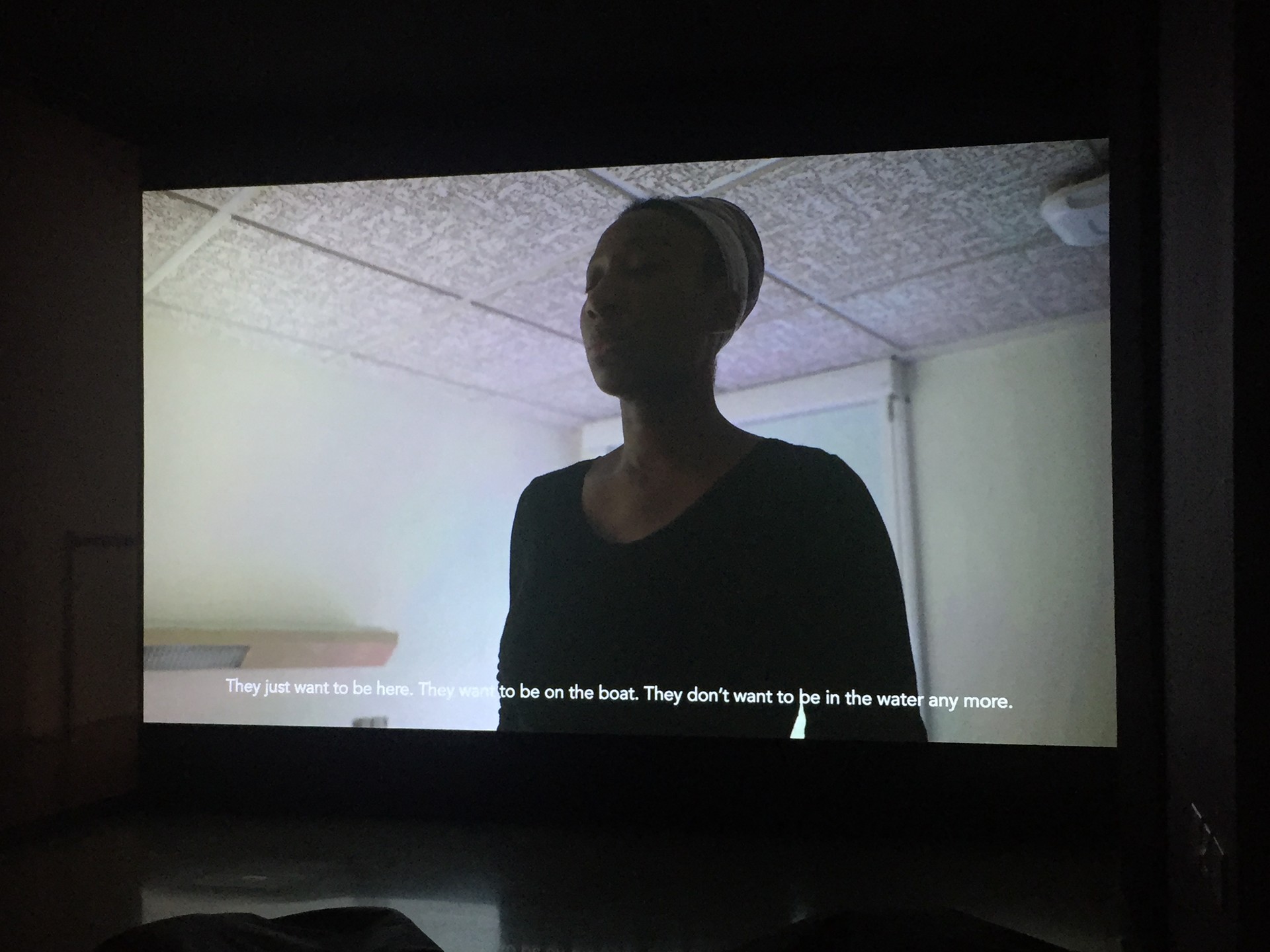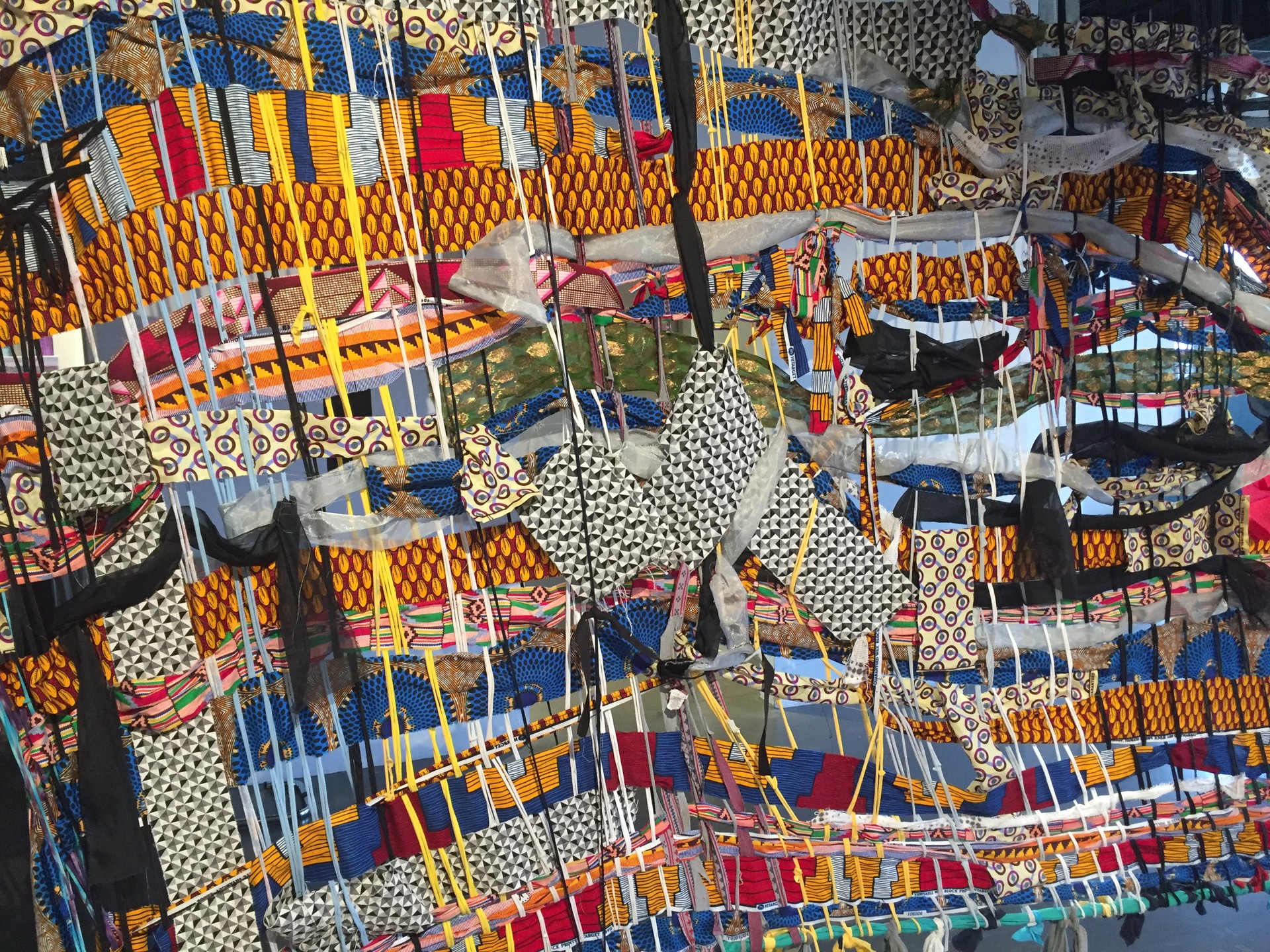ON EDGE: Living in an Age of Anxiety
Hello from Oxford! I’ve just moved back in for my final year of university, and I’m really excited to see what the future holds between now and graduation. I’ll be keeping you updated on everything I get up to over the coming months, so stay tuned for all of those posts, but first dip quickly back into the past, and tell you about a brilliant exhibition that I went to see in London last week.
As soon as I saw the poster for ON EDGE: Living in an Age of Anxiety, I knew that I couldn’t miss it. I’ve been afflicted with anxiety – in one form or another – for as long as I can remember, and am all too familiar with the panic attacks, heart palpitations, and tremors that come with the disorder. I can’t, however, imagine translating these symptoms onto a canvas, and wasn’t, therefore, totally sure that any of the works on display here would resonate with me.

‘Consider Falling’ – Sarah Howe, 2019
My scepticism continued as I walked into the exhibition (which was located on the first floor of London’s Science Gallery). Before me stood about five televisions, all mounted at different levels, each displaying flickering images of a body part. These, a label told me, were meant to represent the experience of dissociation. I can’t say that I felt any deep connection with this work (despite being familiar with the feelings it was illustrating) but I do applaud the efforts of its creator: this manifestation of anxiety is difficult enough to explain orally, let alone visually.
‘To Not Follow Under’ – Leah Clements, 2019
Ironically, being watched by the museum staff, as I viewed this piece, was giving me my own little rush of anxiety, so I moved hastily on, into a dark room at the end of this first corridor. The short film being screened in here was perhaps my favourite feature of the whole exhibition. I loved it so much, in fact, that I watched it through twice, so I could be sure that I hadn’t missed anything the first time round.
What was it that appealed to me so much about this piece? First of all, I liked the comprehensibility of the voiceover. As someone who had experienced the symptoms discussed, I really understood where the speakers were coming from, but, more importantly, I felt that the analogies given were ones that would be accessible even to non-sufferers. One lady, for example, compared panic attacks to drowning: being stuck underwater and dying to come up for air.

I also appreciated the little nuggets of advice that were thrown into the commentary from time to time. One man encouraged sleep disorder sufferers to think of this state of unconsciousness not as something akin to death, but rather something that ensured the prolongation of the rester’s life. A few days on, and I’m already noticing a decline both in the frequency and in the intensity of my own nightly fits of terror.
However, what I liked the most about this film – and it may sound selfish – was the sense of validation it gave me. I’m often met with blank stares when I explain my symptoms to non-anxious people, and this can sometimes make me wonder if I’m (a) overreacting, or (b) actually imagining things. The speakers here put these doubts to rest, but also made me realise that I was not alone: that there were people out there who understood exactly what I was going through. (Oops, that got deep.)
‘With You, If You Need’ – Alice May Williams, 2019
After reading about a study that was being conducted to discover the relationship between anxiety and genetics (visitors can sign up, but they’ll have to allow access to their medical records), I moved on to two paintings which illustrated the positive impact of team sports on mental health. A combination of being cheered on by one’s coaches and fellow players, and feeling that one’s presence is vital for the wellbeing of the whole team, can do wonders for the anxious brain. This idea was illustrated through the slogans written across each canvas. ‘WITH YOU’ read one in block capitals; ‘IF YOU NEED’ read the other.

‘Some People Have No Shoes’ – Cian McConn, 2019
The next installation caught me off guard a little bit: I could see the label explaining the meaning behind the work, but I couldn’t see the work, itself! I was just on the point of giving up and moving on when, by chance, I stood under a lampshade-like object, out of which was coming the recorded voice of the artist. “Some people are vain,” he said. “Some people think they’re the funniest person in the world. Some people get up early.” And so the spiel – which, without an explanation, would have seemed totally trivial – continued.
The meaning behind McConn’s piece was multi-faceted. On the one hand, he was encouraging listeners to consider the wider picture when contemplating their own troubles. You may be going through a rough patch, but there is still so much to be grateful for in life: after all, some people don’t even have the privilege of owning a simple pair of shoes. On the other hand, though, he was trying to prevent anyone from being sucked into the ‘someone has it worse than me, so my mental health problems are invalid’ mindset. Yes, you may have a pair of shoes to your name, but no, that obviously doesn’t always mean that your life is all sunshine and rainbows.
‘The Bad Feel Loops’ – Benedict Drew, 2019
Like the first piece in the exhibtion, Benedict Drew’s The Bad Feel Loopswas another that I couldn’t totally get behind. I understood that the artist, creating a video from blaring sounds and flashy images, was trying to reflect the feelings of anxiety brought on by information overload, but if anything, this installation – with its slightly hypnotic nature – made me feel more relaxed than uneasy. Should I be concerned about my unusual reaction? Let’s hope not…!

‘Common Thread’ – RESOLVE Collective & Science Gallery London Young Leaders, 2019
Finally, I came to a small space enclosed by four weaving loom walls. I couldn’t find any label attached to this strucutre, and I was too shy – ha! – to ask any of the attendants to explain it to me, but after my trip, I discovered that it was there to represent neuroplasticity. Just as the brain constantly changes, in response to life events and external stimuli in general, so, too, would the tapestry be altered, as more visitors added their own unique touches to it.
And with that, the exhibition was over! (There were a few more installations dotted about here and there, but the ones I’ve written about above are those that stuck out to me the most.) A mixture of positive emotions hit me as, after a quick stop in the gift shop, I walked out of the building. I felt happy, I felt awestruck, but most of all, I felt understood.

Final thoughts
Whether you’ve experienced anxiety or not, this public art display is well worth a visit. It’s free to enter (as, I believe, are all events that take place in the Science Gallery), is ultra informative, and will give you much to think about. Head along today, and let me know whether your thoughts on the installations differ from mine. Psychology not your thing? Have a browse of the Timeout website, and find out which other free art exhibitions are taking place in London at the moment! Have a wonderful time, whatever events you pop along to, and never stop being curious!
Photo gallery
Content available in other languages
- Italiano: NERVI TESI: Vivere nell'epoca dell'ansia
- Español: ON EDGE: Living in an Age of Anxiety
Want to have your own Erasmus blog?
If you are experiencing living abroad, you're an avid traveller or want to promote the city where you live... create your own blog and share your adventures!
I want to create my Erasmus blog! →




















Comments (0 comments)